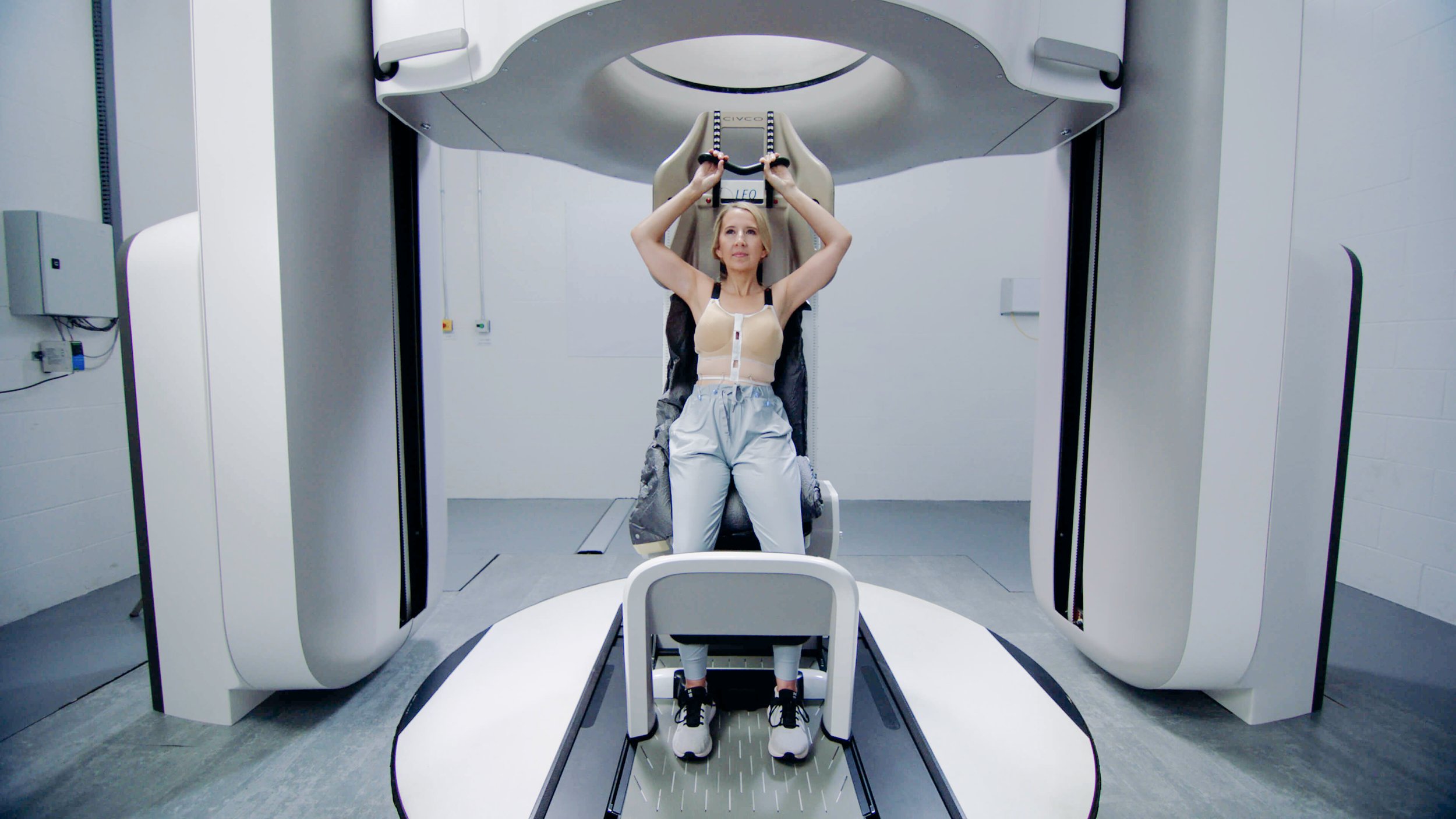Upright radiotherapy for breast cancer is feasible, comfortable and patients show a preference for upright positioning
A recently published paper has highlighted that patients are showing a preference for receiving their radiotherapy in the upright orientation and how the use of radiotherapy bras can effectively position the breasts for upright treatments
Research has shown not only that treating breast cancer in an upright position is feasible but some patients may also find this position more comfortable.
The study included 16 volunteers aged 34-90 with 9 volunteers having previously had conventional supine radiotherapy treatment for breast cancer. .
The patient cohort explored global body positioning and comfort and the healthy volunteer cohort explored comfort, inframammary skin folds (ISF), specialised bras (SuPPORT 4 All bra and Chabner XRT bra) plus topless breast reproducibility.
The authors reported the following results:
7/9 volunteers preferred the seated or perched position and 2/9 preferred conventional supine treatment
The SuPPORT 4 All bra (S4A) eliminated ISF for 7/7 women, the Chabner XRT bra eliminated ISF for 4/7 women, however it is possible that alternative fitting strategies may have improved the performance of the Chabner XRT bra.
Lower body positioning was found to be consistently reproducible and 81% of the volunteer repeat set ups matched to within 3 mm in the breast region.
Participant feedback: more felt the Chabner XRT bra was easy to put on, both bras were easy to get off, participants felt better supported in the S4A bra and felt less exposed but felt that it looked less like a normal bra and more like medical equipment.
A model wearing the SuPPORT 4 All bra in Leo Cancer Care’s upright patient positioning system
The study, conducted by a team of four, sought to explore gantry-free radiotherapy which is attracting global interest as a potential option to bring down the cost of radiotherapy.
Upright patient positioning systems, such as Leo Cancer Care’s solution which was used in this study, negate the need for costly, large rotating gantries and reduce amount of treatment room shielding that is required. These factors could make all forms of external beam radiotherapy more affordable and accessible. Despite breast cancer being the most common primary cancer site, this is the first known research into upright body positioning for breast radiotherapy, apart from a single case report.
As well as highlighting a preference from patient volunteers to be in the upright position, an integral aspect of the study was to determine if arm and body position would allow for beam access.
The study showed that the “two specialised radiotherapy bras were effective in minimizing ISFs even for larger breasted women and an upright body positioning can provide additional flexibility in arm positioning”.
The authors confirmed that “tilting the backrest further backwards served to stretch out the body, reducing the extent to which abdomen bunched against the breasts”
In terms of beam clearance it was concluded that “raising one arm on the ipsilateral side provided adequate beam access for photon tangents”, although the authors note that further research is now warranted to check photon dose-sparing for the contralateral breast.
“Proton radiotherapy beam access should be straightforward, even for arms-down treatments, as en-face field directions are typically used”.
The findings from the study, Upright patient positioning for gantry-free breast radiotherapy: feasibility tests using a robotic chair and specialised bras, are now published in Frontiers in Oncology, available at:
Please note: The Leo Cancer Care technology is not clinically available and will not treat patients until the required regulatory clearance has been achieved.

